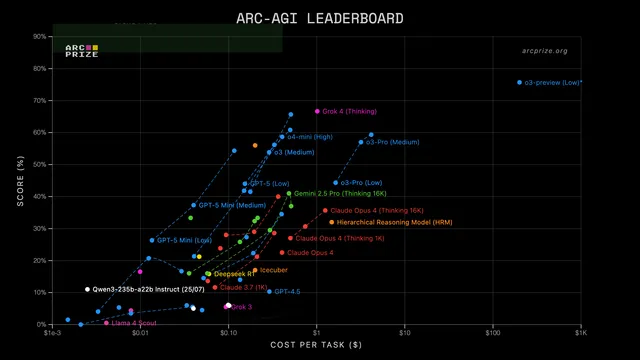The One-Parameter Model That Broke ARC-AGI
Audience: undergraduategraduate
I built a one-parameter model that gets 100% on ARC-AGI-1, the million-dollar reasoning benchmark that stumps GPT-5. Using chaos theory and some deliberate cheating, I crammed every answer into a single 864,000-digit number.
Analytics
Comments
I assume your code at the end is missing. I like the way that you hide that your function is a fancy lookup table.
I think your point about how easy it is to teach a new concept to an AI (and apply it correctly and consistently) may be a better test of its abilities as a general intelligence.
good
There’s proof of work in the document, it’s topical and written in an entertaining way. You can download the code so it’s even reproducible! This also falls in the “personal bookmark” department and I will totally share it on socials once the competition is complete. It does however seem like a big part of the notebook is missing, which is a bummer.
I will also admit that I have a soft spot for marimo notebooks, so I am a bit biased on that front too.
Fun progression with a good narrative. Seems like the author may have forgotten to finish it off, but was enjoying what I read
Very interesting! I’m not sure if the end has been cut off though.
I enjoyed how you addressed an issue of hype and drama by creating a hype and drama entry and raising awareness of how to scrutinize and evaluate models reasonably. Thank you also for the paper references. Maybe make a video of this article whether it be for the next SoME entry, or just raising awareness via a YouTube video. I’ve bookmarked this for its content, and references. PS: your code implementation needs some completion. The Ranking score is an average of these individual scores, good luck! Motivation: 9 Clarity: 6 Novelty: 6.25 Memorability: 7.80
Impressive, but the code implementation section at the bottom seems to be missing.
This was quite interesting. The basic idea of just stringing together the answers to form an overblown rational came out very naturally and I understood how we can use the dyadic map to encode / extract it. When you move to the logistic orbit, it doesn’t display them for me in the comparison table and everything after that went a bit over my head. I liked how the individual ideas form a coherent thought process rather than doing an isolated explanation.
Do I understand correctly that you didn’t get around to doing the code implementation? In the linked version, the doc just ends abruptly, whereas adding a conclusion would have been more graceful. Since there aren’t any interactive elements in this version, I’d advise to export out of marimo so that the viewer isn’t confused by the program and irrelevant UI elements next to your content.
